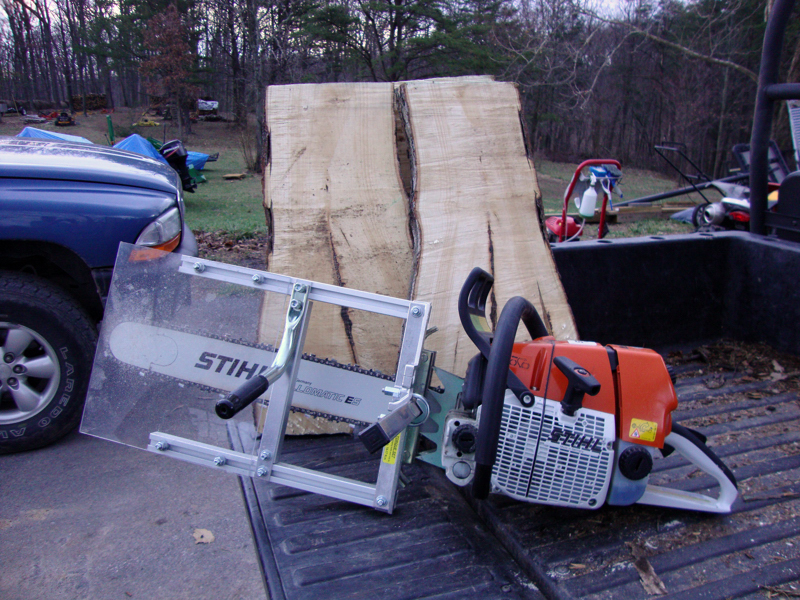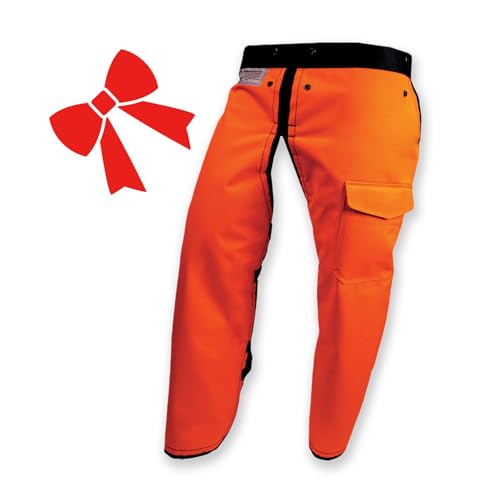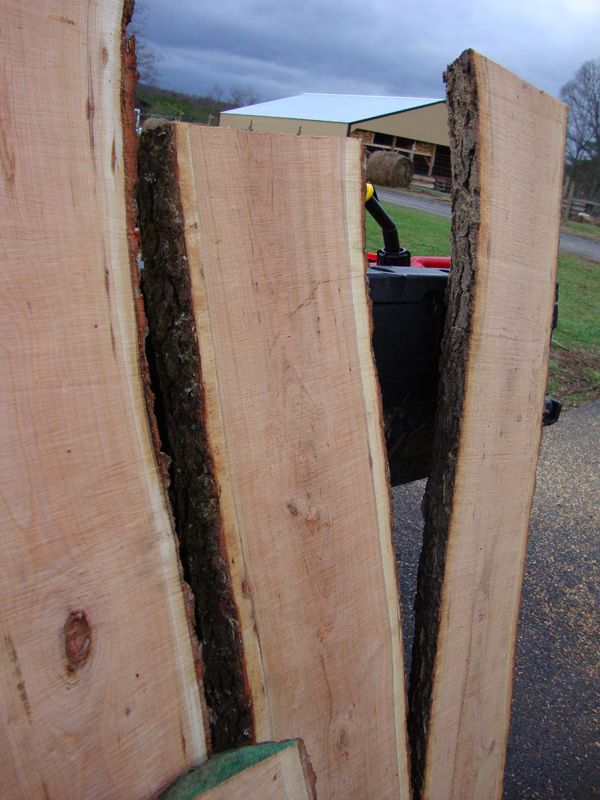Bob...what bar and chain should I be looking into? These were done with the factory bar and chain....I am getting better at cutting smooth but know there are better cuts to be made.
There are two aspects to cutting smoothly, one is how you hold and move the saw, and the other is the chain. The size of the chain and bar is largely irrelevant.
Holding and moving the mill/saw
Smoother cuts can be obtained by finding a sweet spot in the RPM range that allows the mill to move forward at a steady rate, and using a stance that permits a constant pressure on the mill. Also avoid seesawing the log in the cut. Cycling between max rpm and almost bogging the saw will create a rougher cut than holding the saw at a steady rpm
This is why I like to apply the primary and constant pressure on the saw wrap handle with my hip/thigh/knee. When I need to take a step forward I apply pressure with one arm, ease off with my leg and step forward and reapply pressure with my leg. This means I mainly using my arms to work the remote throttle and to guide the mill. Sometimes I just lock the throttle and this leaves both my arms free momentarily free to add wedges and scratch myself. If the logs is on a slope this of course also helps the mill keep cutting of it's own accord. I found this method of cutting really reduces the strain on my shoulders (I suffer from bursitis, an inflammation of the lubrication sack between the arm and shoulder) at the end of the day. This of course is not the only way to do this - as long as the pressure is always smooth it can vary considerably.
When I first started, I used to often seesaw the mill down the log. This creates a much rougher finish because the mill twists in the cut. I still do this sometimes towards the end of a long hard wide slab - the reason for this is by then the chain is getting blunt and the seesawing cuts less wood at any one time so it takes a little load off the powerhead (I can see this effect on the temp gauge). Some people think this method is faster but it really isn't much faster.
If you do have to stop cutting completely during the cut, then when restarting, resist the urge to crank the saw WOT and drive it back into the cut as this will create a rough strip on the two surfaces. Just ease the powerhead up to WOT as the chain enters the wood.
Bar and chain
Some people seem to get sufficiently smooth cuts using regular crosscutting chain while others swear by lower top plate cutter angles. IMHO a good milling cutting style (as describe above) can generate smooth cuts with regular chain but it only takes a momentary loss of attention to leave a slab wide chain gouge on your slab using regular chain. In most cases this means a few extra passes thru a thicknesser but if you are milling wide natural edge slabs then this means a lot more sanding. I use a 5-10º top plate (milling chain) and combined with a good milling style works for me and leaves a little room for a lack of attention from time to time.
Regular chain will make a marginally wider cut so a small amount of power needs to be diverted to do this, OTOH, the top plate is performing more of a slicing rather then a chopping action so it is swings and roundabouts on this factor. One thing I do not like using regular chain for is on longer bars as the extra sideways chop/vibe can easily pull the chain off the bar.
The other chain factor that affects finish is chisel versus semi-chisel. Because chisel uses a point it will scratchier finish whereas semi-chisel has a rounded cutter corner which leaves dimples rather than scratches. Once again, in practice this means a few extra passes thru a thicknesser but if you are milling for wide natural edge slabs using the existing thickness then this means a lot more sanding to get out that one last pointed scratch. There are other reasons for and against using chisel and semi-chisel, the main one for me being that chisel will go dull quicker, especially in harder dirtier wood.
All you can really do is try different chains for yourself and see what works for you.

































































